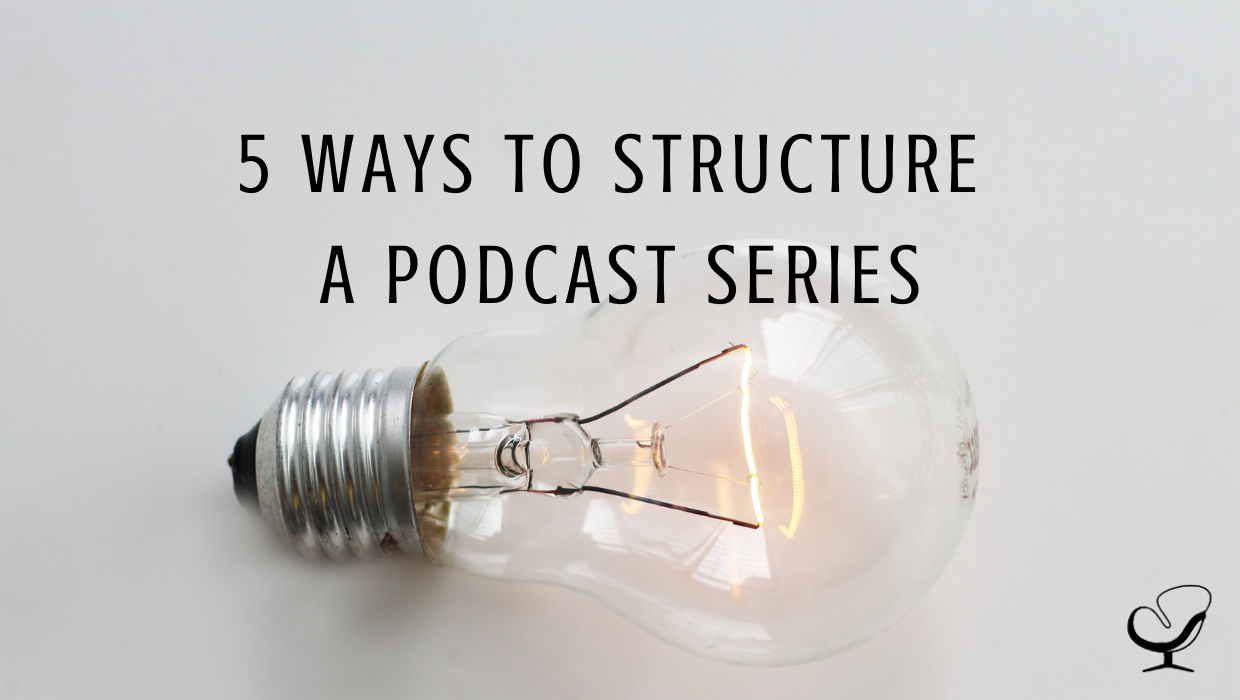Why You Should Structure a Podcast Series
Professional podcasters often fall into a cycle of stagnation. You launch a podcast – maybe it takes you months or years to do that. Then it’s growing. You’re excited to notice people other than friends and family listening. Maybe you even are at the point where you’re launching products and making a decent living from podcasting.
But then it becomes monotonous. Maybe it’s solo shows or interviews – but it all starts to morph into the same. If you feel this way – your audience sure does as well – and that’s a recipe for losing listeners.
Podcast Series Ideas
One of the most effective ways to break up this cycle of stagnation is to launch and structure a podcast series. There are five proven series strategies that will help you take your podcasting and audience to the next level:
- Theme-Based Interviews
- Deep Dive Breakdowns
- Story-based Lessons
- Sprints
- Panel of Experts
How to Structure a Podcast Series
Many of these podcast series ideas overlap in their application. So take some time to decide which style is best for you. As we’ve talked about before, always focus on the pain of your listener and their transformation they’ll experience.
Theme-Based Interviews
Theme-Based Interviews can occur naturally or planned. As a podcaster, one of your primary strengths is to follow your curiosity. What are you interested in? Theme-Based Interviews are when you have a series of interviews on a specific topic. In June 2020, I did a series called “Black Leaders Matter” where I interviewed black leaders that are therapists. We discussed a variety of issues around race, mental health, and social justice.
When you do a Theme-Based Interview series, identify the various ways to think about your particular theme. For example, say you’re discussing entrepreneurship:
- From a macro view: What is entrepreneurship, and what is the history of how we got here?
- For the individual experience: What stands in the way of being a strong entrepreneur?
- What trends are we seeing through research into entrepreneurship?
- How do other countries view entrepreneurship?
- How are various regions of your country positioned to be strong in the areas of entrepreneurship?
After you brainstorm a number of questions, look for experts, professors, researchers, and others that can help with those puzzle pieces to make a strong podcast series.
Deep Dive Breakdowns
A Deep Dive Breakdown is when you do solo shows that dive deep into a topic. You are the expert. Maybe you really understand setting up a WordPress website. Over a six week series, you talk about a variety of aspects of WordPress. This type of series is highly valuable to the listener. Also, you can reuse the audio in a package, where you may add B-roll video, handbooks, or eCourses that help apply what you teach.
In a Deep Dive Breakdown, focus on one particular area where it will take some time to implement. Here are some episode ideas:
- Episode 1: Why this is the single best use of your time right now?
- Episode 2: Steps for set-up to help you achieve the most in this series.
- Episode 3: The nuts and bolts of this topic to speed up your learning.
- Episode 4: Red flags and things people screw up with this topic.
- Episode 5: From amateur to professional – What you need to do long term to achieve in this area.
- Episode 6: Lifelong habits that will help you grow in this area.
Just fill in your topic and you have an awesome structured podcast series!
Story-based Lessons
When you do a series of story-based lessons, you gather entertaining and informative stories from your own past, other businesses, or the news. I’d highly recommend reading The Storyteller’s Secret by Carmen Gallo if you need to grow in this area. Each podcast would have a similar structure:
- Intro to the series theme
- Story 10-20 minutes
- Main points or takeaways
- Teasing the next story or points
With this format, you use neuromirroring to connect with your listeners. When someone hears a story, their brain lights up in the same way yours lights up (neuromirroring). In doing this, they connect more with a speaker.
Sprints
A few years ago I tested a product called “Blog Sprint.” It was a two-week intensive where I did teachings and then people had to write at least a blog post a day. I realized I wanted more passive income, but the way I had over 100 people sign up at $99 per person, was a podcast series on blogging. I covered stats, techniques, and reasons to blog. In each episode, I promoted my new product.
By giving a highly specialized piece of content (the podcast series) I was able to gain a highly specialized audience to buy the intensive. Great podcast sprints are:
- Highly specialized
- Follow a natural arc
- Give practical actions for results
- Dig in deeper and utilize keyword phrases
- Inspire listeners to take action.
Also, it allows you to expand a skill set and potentially use the recordings as part of a course or video series.
Panel of Experts
A Panel of Experts Series focuses on bringing in people with more knowledge around a particular topic. In preparation, have your listeners submit questions or even attend live. For example, you may do a series on website optimization with a panel. You may want a developer, SEO expert, and design expert.
You can decide whether you’ll do one at a time or have them all together with different themes. I prefer to do it more panel style because often it becomes more discussion-based. As well, sometimes one expert might have a different perspective and it can make for an interesting back and forth.
A structured podcast series can breath more life, specialty, and engagement into your audience. So which series are you going to do next?

